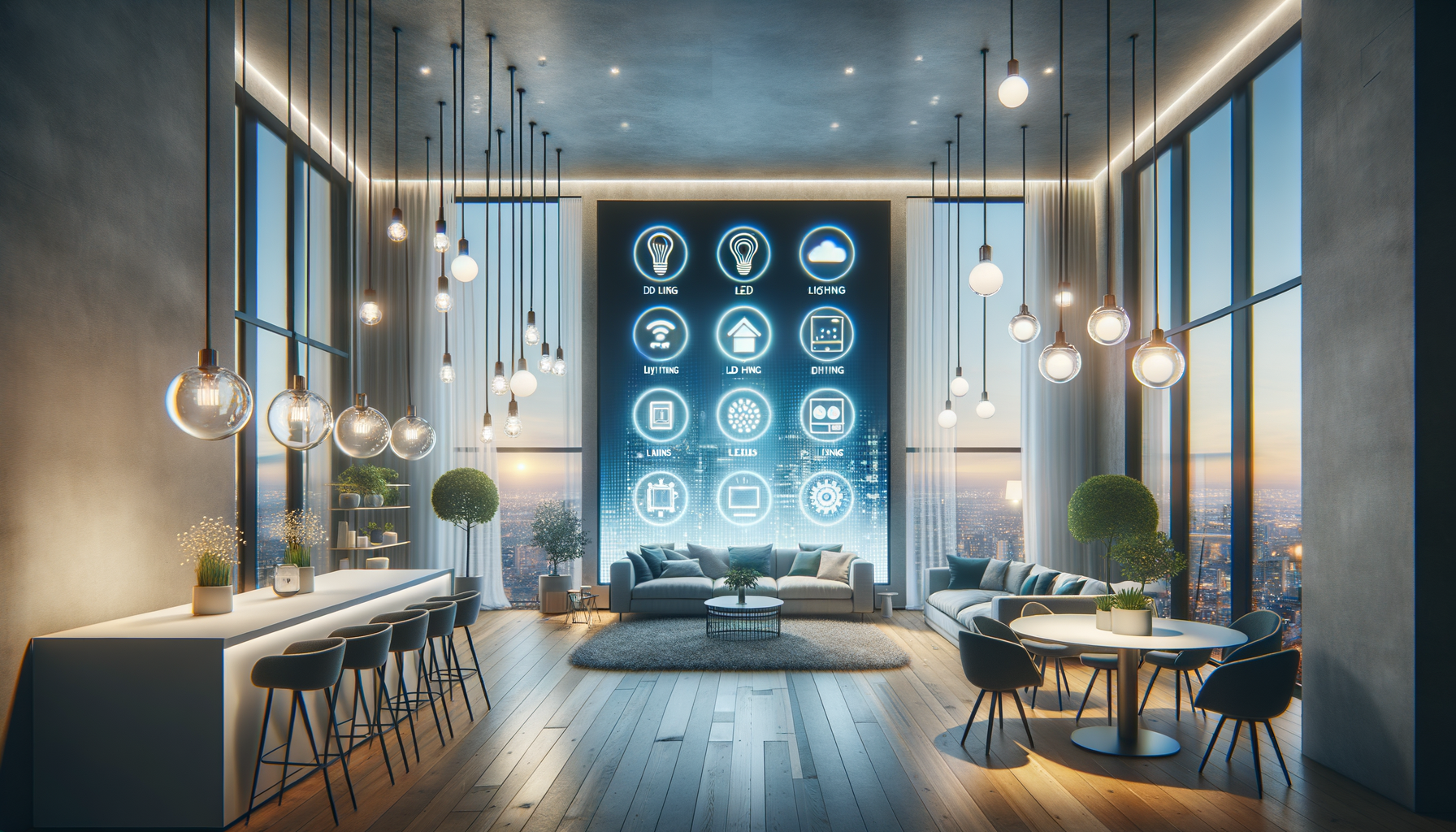
A Practical Guide to Innovative Lighting Solutions for Modern Spaces
Smart Home Lighting: Transforming Spaces with Technology
In the modern home, lighting has transcended its traditional role of mere illumination. Smart home lighting systems are revolutionizing how we interact with our living spaces. These systems offer a level of control and customization that was once unimaginable. Imagine walking into a room and having the lights adjust automatically to your preferred setting. This is the magic of smart lighting. These systems can be controlled remotely via smartphone apps, allowing users to tweak settings from anywhere in the world. The integration of voice-activated assistants adds another layer of convenience, enabling hands-free operation.
Smart lighting systems are not just about convenience; they also offer energy efficiency. By using sensors and timers, these systems can ensure lights are only on when needed, significantly reducing energy consumption. Furthermore, the ability to dim lights and change colors can create the perfect ambiance for any occasion, making your home not only energy-efficient but also aesthetically pleasing.
Some key features of smart lighting include:
- Remote control via smartphone apps
- Integration with voice-activated assistants
- Energy-saving sensors and timers
- Customizable color and brightness settings
As technology continues to evolve, smart lighting systems will become even more advanced, offering homeowners unparalleled control over their living environments.
Energy Efficient Lighting: A Bright Idea for the Future
Energy efficiency is a major concern in today’s environmentally conscious world. Lighting accounts for a significant portion of energy consumption in homes and businesses, making it a prime target for efficiency improvements. Energy-efficient lighting solutions not only help reduce electricity bills but also contribute to a reduction in carbon footprint.
One of the most effective ways to achieve energy efficiency is by transitioning to LED lighting. LEDs use significantly less energy compared to traditional incandescent bulbs and have a much longer lifespan. This means fewer replacements and less waste, further contributing to environmental sustainability.
In addition to LEDs, other energy-efficient lighting options include compact fluorescent lamps (CFLs) and halogen incandescent bulbs. Each of these options offers unique benefits, such as reduced heat output and varying light temperatures, allowing consumers to choose the best fit for their needs.
Key benefits of energy-efficient lighting include:
- Reduced energy consumption
- Lower electricity bills
- Longer lifespan of bulbs
- Decreased environmental impact
By embracing energy-efficient lighting, individuals and businesses can make a tangible impact on their energy usage and contribute to a more sustainable future.
LED Lighting Trends: Illuminating the Path Forward
LED lighting has become a cornerstone of modern lighting solutions, and its popularity continues to grow as new trends emerge. One of the most exciting trends in LED lighting is the development of tunable white LEDs. These lights can adjust their color temperature throughout the day, mimicking natural daylight patterns. This technology can enhance well-being by aligning indoor lighting with our natural circadian rhythms.
Another trend is the integration of LEDs into architectural and decorative elements. From under-cabinet lighting to innovative outdoor installations, LEDs offer flexibility and creativity in design. Their small size and low heat output make them ideal for applications where traditional lighting would be impractical.
Moreover, advancements in smart LED technology are making it possible to integrate lighting with other smart home systems. This creates a cohesive and intelligent environment where lighting responds dynamically to changes in the home, such as occupancy or time of day.
Trends in LED lighting include:
- Tunable white LEDs for circadian rhythm alignment
- Integration with architectural and decorative elements
- Advancements in smart LED technology
- Increased focus on sustainability and recyclability
As LED technology continues to advance, it promises to offer even more innovative solutions that cater to both functional and aesthetic needs.
Comparing Smart and Energy-Efficient Lighting Solutions
When considering a lighting upgrade, it’s essential to weigh the benefits of smart lighting against energy-efficient solutions. While both offer significant advantages, they cater to different needs and preferences.
Smart lighting systems prioritize convenience and customization. They provide users with the ability to control lighting settings remotely and integrate with other smart home devices. This level of control can enhance the user experience, making everyday tasks more seamless and enjoyable.
On the other hand, energy-efficient lighting focuses on reducing energy consumption and minimizing environmental impact. Solutions like LED and CFL bulbs are designed to use less energy and have longer lifespans, offering cost savings over time.
Key considerations when choosing between smart and energy-efficient lighting include:
- Budget constraints and potential savings
- Desire for convenience and customization
- Environmental impact and sustainability goals
- Compatibility with existing home systems
Ultimately, the choice between smart and energy-efficient lighting depends on individual priorities. Some may find a combination of both to be the ideal solution, balancing the benefits of technology with the need for sustainability.
Conclusion: Lighting the Way to a Brighter Future
As we navigate the evolving landscape of lighting technology, it’s clear that both smart and energy-efficient solutions offer promising avenues for enhancing our daily lives. Smart lighting brings convenience and customization to the forefront, while energy-efficient options underscore the importance of sustainability and cost-effectiveness.
By understanding the capabilities and benefits of each, consumers can make informed decisions that align with their personal and environmental goals. Whether opting for the advanced features of smart systems or the eco-friendly attributes of energy-efficient lighting, the future of illumination is bright and full of potential.
As we continue to innovate and embrace these technologies, we not only improve our living spaces but also contribute to a more sustainable and energy-conscious world.